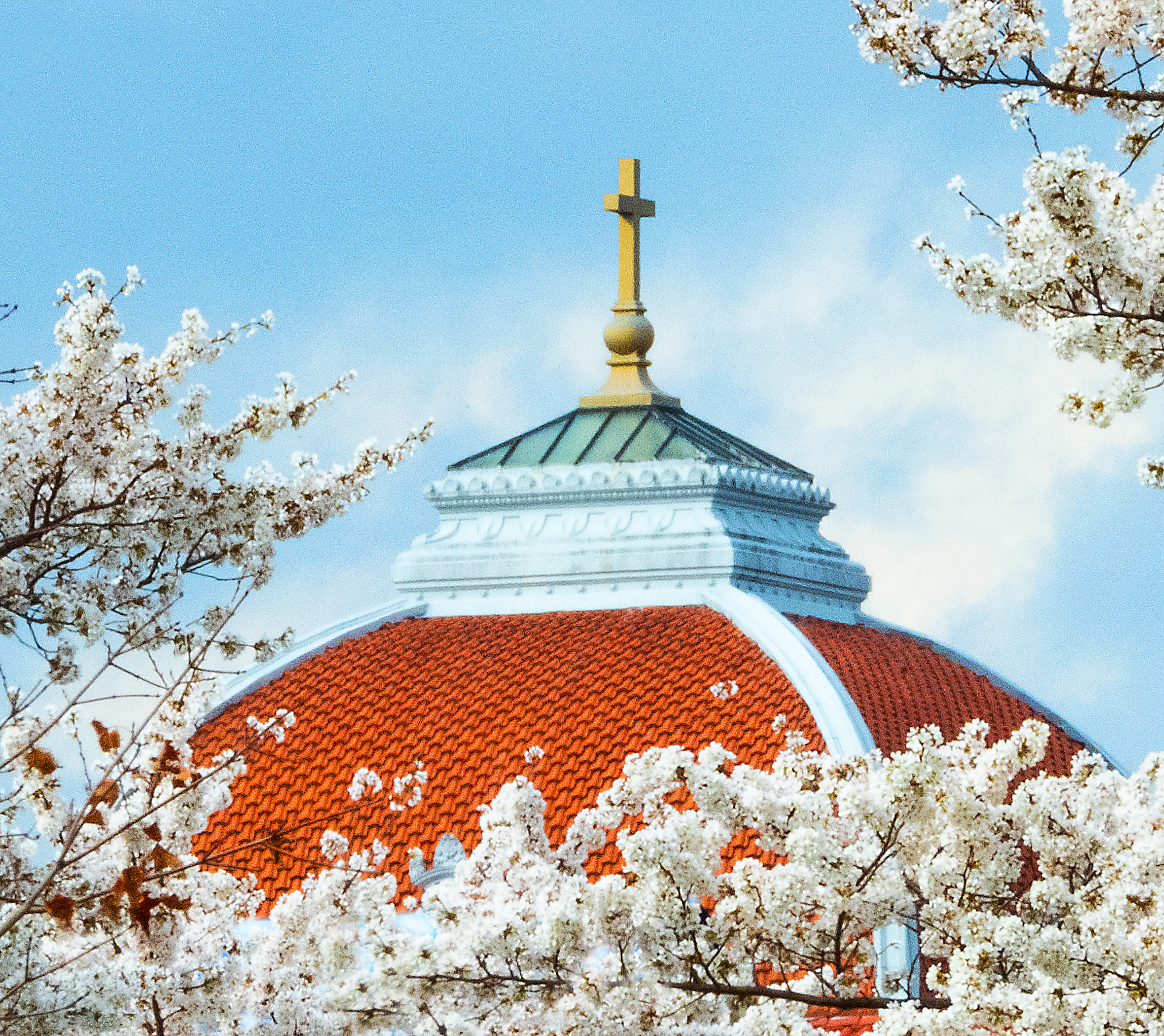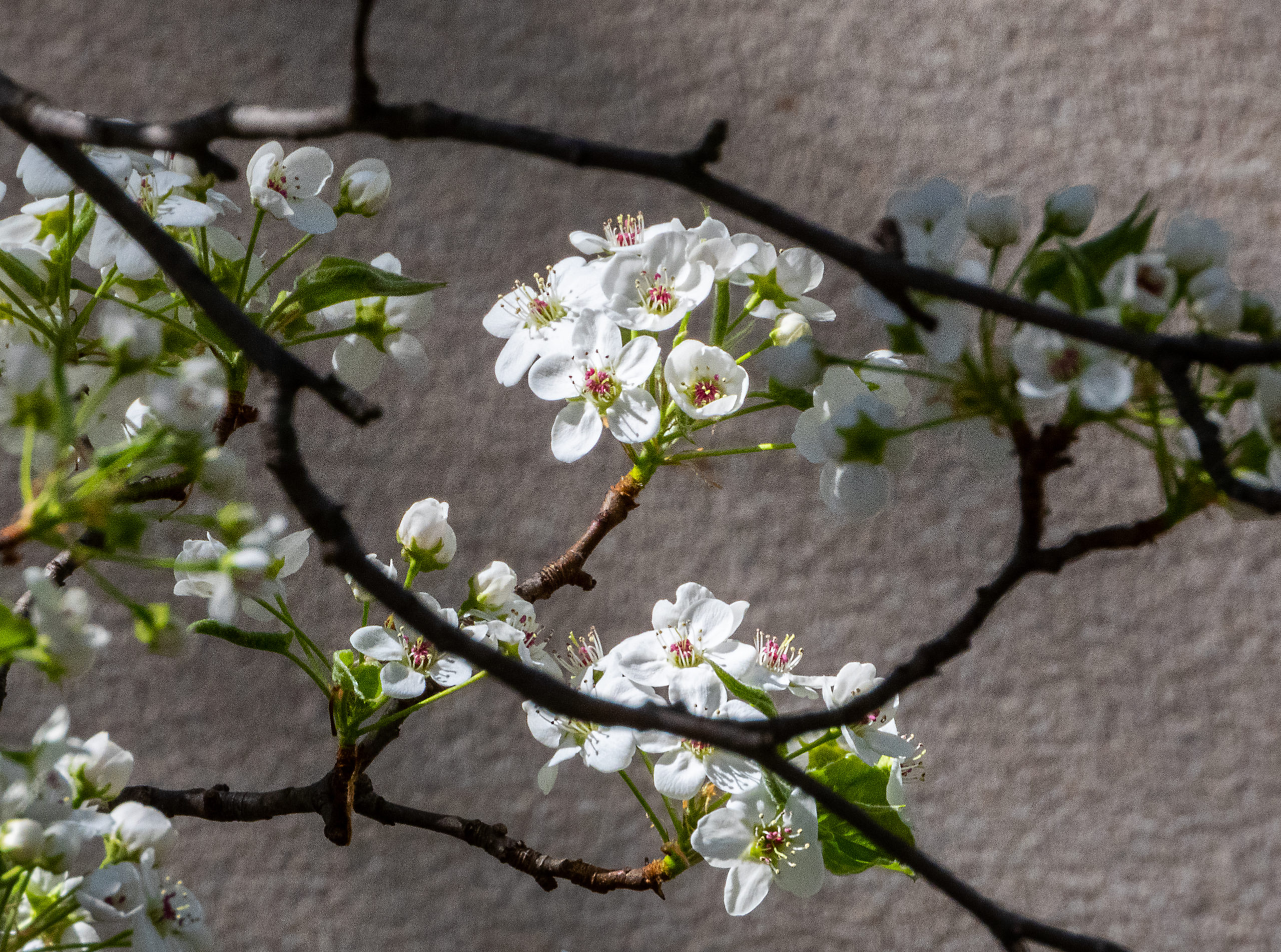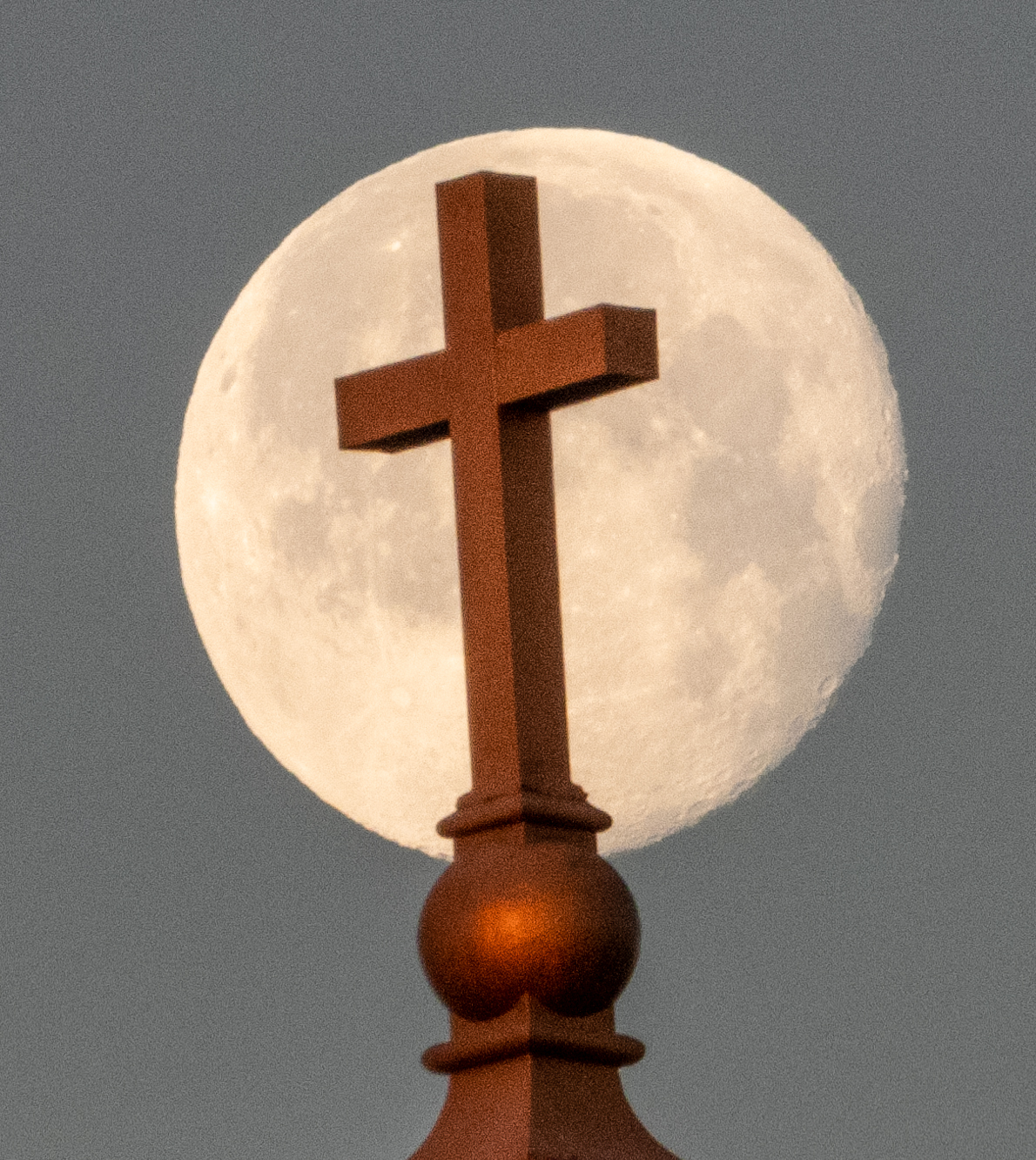
Resurrection Redux

(View of Trinity’s Main Hall Dome from Glenwood Cemetery)
Once more, the Resurrection. Once more, we observe the rituals ingrained from our earliest memories — the betrayal of Spy Wednesday, the Last Supper of Holy Thursday, the pain and passion and ugly death of Good Friday, the waiting and uncertainty of Holy Saturday, and finally, the glorious morning of Easter Sunday. Catholics and Christians around the world know this pattern, perhaps embellished by local customs and the preferences of pastors, but the rhythm is the same. For the children, some jelly beans and Easter bunnies to make the day festive, and for all, the best spring suits and Easter hats for Sunday Mass and church services.
So it was before the Great Disruption, the Pandemic Years, the dark cloud of disease and death that forced all of us into places of hiding, behind masks and keeping our distance, staying away from crowds and skipping the rituals of worship and ballgames and graduations and large celebrations that normally enrich our lives with meaning and memories.
Just one year ago at Easter, I wrote on this blog about the Pope’s message of hope and resilience in the face of so much darkness and uncertainty. Last year, the Pope spoke eloquently of hope; this year, he spoke urgently of the need to produce more vaccines and to get them administered among the most vulnerable people of the planet. Italy is in lockdown once more, and virus surges and mutants are prevalent in many places.

Here in Washington, we have signs of hope — vaccine administration is getting better, more people are overcoming their reluctance to get the shots, and most people cooperate with public health expectations for masking and distancing. A new political administration is offering vastly improved support and management for pandemic relief and economic recovery, and the political change is welcome. At Trinity, we have high hopes to be able to return to many in-person classes by late August for the Fall 2021 semester; we are planning a festive and safe “graduation parade” in cars for commencement in May, and look forward to a socially distanced picnic later in April.
But even as we gainfully try to return to some semblance of cherished rituals and traditions, the spectre of the terrible pandemic year continues to haunt us. Too much sickness, too many deaths, so much disruption in families and jobs and communities whose vitality depends on human commerce and engagement. Zoom can only do so much. We need to see each other in-person to be truly present. To come back together in true human community, we need more people to do the right thing, to get vaccinated, to wear masks, to insist to the doubters that our collective good requires cooperation with all health guidance.
So this year, Easter 2021, we continue to search for the true Resurrection after the suffering of the horrific pandemic year. The resurrection we seek has to be more than an end to disease, a return to what we knew before. For the Resurrection to be real in our lives, we have to embrace this moment as an opportunity for true conversion as well. We need our communities to return from pandemic-imposed isolation to a more vibrant sense of sharing for the common good, to social and political engagement to help those who need our voices and expertise to improve conditions for all. We must raise up our commitments to work for racial justice, to ensure a more secure future for immigrants and refugees, to insist that our governments do a better job of providing help and resources to those who need them the most. Resurrection after the pandemic does not mean returning to life as we knew it before, but rather, reinventing our lives in communities that will be healthy and productive because of our collective good works and commitment to the common good.
On this Easter, may we reaffirm our commitments to work for true Resurrection in all of the communities we influence.
